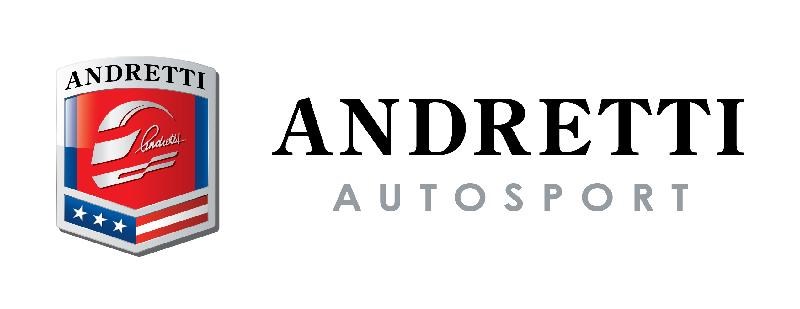In the way of a power ranking, or any other subjective (/schlocky) analysis tool, this feature aims to be a representation of my thoughts on whether the rated subject is expected to rise from this point (a ‘buy’), fall from this point (‘sell’), or continue with a possible rise or drop currently hanging in the balance (‘hold’). With any luck, I’ll manage to throw in a humorous comment.
Each subject has an associated link to help make your own assessment. I would love to hear your takes on these subjects in the comments.
Since our season is underway, let’s have at it.


The Carb Day Concert – An oft beloved/maligned Indy 500 tradition has, I fear, reached a vital turning point in the offices of Penske Entertainment (PE) at IMS. The recently noted belt-tightening of PE in management of Indycar may very well trickle over into IMS and the event budgets. With the 100th Race weekend seeing a massive crowd for Carb Day on such a monumental weekend, I feel this event could be considered a ‘Hold’ as I see some unmet potential with regard to annual funding, proper talent-seeking, and promotion. Meeting the lofty attendance that showed for Journey in 2016 only takes $$$ and perfect weather. Something within the purview of IMS superhuman Mr. Doug Boles, no question.
I’d love to propose to the Indy 500 event brass that more of a one-day music festival type of show that included local bands, a mix of genres, and a prime headliner would be suited for Carb Day success, adding 5,000-10,000 people to IMS on the day that wouldn’t otherwise be there. Until that phone call comes however, I fear the stagnation of potential and as we race fans know, if you aren’t progressing, you’re falling behind.
When the current Snake Pit ™, with all of it’s new-gen swag, announces lineups and can sell tickets off that months ahead, the Carb Day concert often feels more an afterthought by comparison. My fear as a fan of live music and Indycar is that this budget line item will ultimately get the ‘red-ink treatment’ soon. As many great Carb Day experiences and stories I could share, I’m tempering myself for when the Carb Day concert axe falls.
 Carb Day Concert verdict = SELL.
Carb Day Concert verdict = SELL.

Juncos Hollinger Racing – This team gained much-needed backing and support in the off-season allowing them to take a few steps up in professionalism and competitiveness with the rest of the Indycar paddock. I am an unabashed fan of the ‘plucky underdog’ and perhaps no team has better represented this title over the last 10 years.
After the new logo and livery reveals in January of 2023, and much ballyhoo about investment into the team, there is much excitement surrounding this team despite only one race for 2023 behind us on which to judge. In all, this sophomore season by the impressive Callum Ilott, and solid St. Pete debut by Argentinian rookie Agustín Canapino (who has an impressive TC2000 CV to his name), will do nothing but keep fans’ (and competitors’) interest in their progress.
For someone like myself, who is a sucker for a great livery, the look of these cars alone makes me a fan. What they’re building, however, is certainly worth my time and interest. I’m eager to see how these ‘up-and-comers’ perform.
 Juncos Hollinger Racing verdict = BUY
Juncos Hollinger Racing verdict = BUY

Andretti Autosport – Michael Andretti’s operation has been a stalwart of the Indycar paddock over the last 20 years, yet I think we all could agree that they could be considered to have not fully met their potential in terms of on-track success when compared to the likes of Ganassi and Penske.
This fresh-faced stable of newer Indycar talent like Herta, Grosjean, Kirkwood, and DeFrancesco however almost reminds me of a time when the stable featured names like Wheldon, Kanaan, Franchitti, and Herta. Certainly never short on resources, I have a feeling the newest version of chemistry and energy in this squad vaults them back into serious championship contention. The only caveat that keeps me from making AA a ‘Buy’ is a result like we saw at St. Pete where Michael’s carbon fiber bill from wrecked chassis might more resemble the GDP of a small nation than a weekend bender in Ibiza.
This team could use several races where at minimum 3 or all 4 cars finish, then serious momentum will begin for them in mounting a serious title challenge. Of course winning the Indy 500 never hurts either, but with double points bonus gone for that race, true consistency will be rewarded over the 17 races.
 Andretti Autosport verdict = HOLD.
Andretti Autosport verdict = HOLD.
The Thermal Club – From this fan’s perspective, holding a two-day spring training 1,900 miles away from your home base of Indianapolis on a gated, private, country club track seems a fair bit, erhm, ‘exclusive’. Nathan Brown’s coverage and article for the Indy Star explains the club and the Indycar connection deeply enough that fans bothered to read can see why this location became the destination.
Strictly from my selfish fan’s standpoint however, I envision a 3-4 day spring training that more closely resembles stick-and-ball sports where the fan access to drivers, teams, and garages, although really second to none during the season, is unprecedented and in a locale that most fans east of the Mississippi River would visit at the time of year anyway. Something akin to a ‘can’t miss’ annual calendar event for dedicated fans approaching the level of the Indy 500. Maybe that’s asking for too much, but it couldn’t hurt to ask, right?
What the Thermal Club provides that most other locations don’t currently is nearly-assured prime weather for Indycar testing, and an eager audience of people with a few more zeroes before the decimal point in their bank accounts than a plebian fan such as me. Even southern Florida is subject to near daily rain showers and sub-70 degree temps aren’t uncommon. The potential for getting Indycar up close and personal with the eyeballs of people in The Thermal Club stands to be a net positive for teams and drivers in ways that the average fan doesn’t add. Fair enough I suppose.
I’m eager to see if this location for spring training becomes an annual event, and what may come from it. Enough so that I can’t outright dismiss it as excluding ‘the fan’ and earn a ‘Sell’ rating here.
 The Thermal Club verdict – Hold
The Thermal Club verdict – Hold
I’m interested in your takes on the Carb Day Concert, Juncos Hollinger Racing, Andretti Autosport, and The Thermal Club. Let me hear them in the comments!


